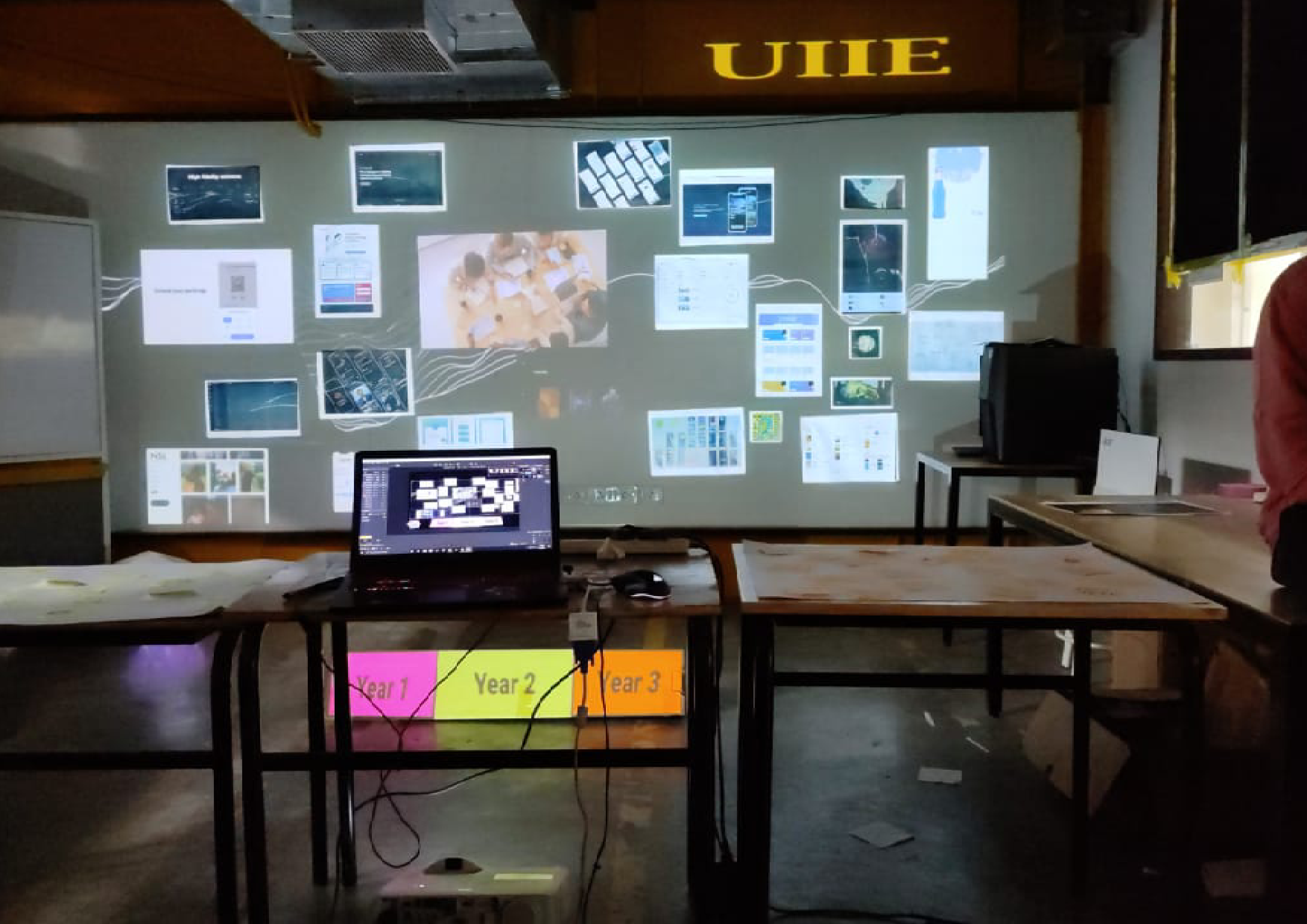User Interface and Interaction Design
ABOUT THE PROGRAM
The User Interface and Interaction Design (UIID) program provides students the skills and knowledge to create professional interface designs and interactions across various media platforms, including applications, websites, games, and virtual reality experiences. As a student in this program, you will explore the tools and methods necessary for creating and communicating interface design and can specialize in areas such as Visual Prototyping, Motion Design, and Front-End development. This course aligns with the National Skills Qualifications Framework (NSQF) guidelines for levels 4, 5, 6, and 7 and trains you for careers in the Information Technology and Media-Entertainment sectors. Whether you are designing for a mobile app or a virtual reality experience, this program equips you with the skills needed to craft effective interfaces that meet the needs of your audience.
The core skills acquired through the above to build a well-rounded designer are:
Development of skills to create interactive systems that engage users effectively, including understanding user behaviour, creating wireframes and prototypes, and implementing feedback mechanisms.
Proficiency in creating user-centred designs that are accessible and easy to navigate, incorporating usability testing, user research, and analysis to optimize the overall user experience.
Mastery in designing intuitive and visually appealing interfaces for applications, websites, and digital platforms, focusing on layout, colour theory, typography, and responsiveness to enhance user experience.
VISION
The vision of the 3-year program in User Interface and Interaction Engineering is to train aspiring practitioners to develop exceptional skills to craft high-quality, professional interface designs and interactions across multiple media.
Humans increasingly employ and interact with technologies as they go about their daily lives to get things done – all this happens through interfaces. Thus, effective and well-crafted interfaces and thoughtful interactions are the key to the success of any product or experience today – be it an application, website, game or virtual reality experience. This aspect is at the heart of many design-driven organisations offering digital products and services.
Learning focuses on the tools, standards, frameworks and methods of creating, documenting, and communicating interface design across web, mobile, gaming, augmented and virtual reality platforms. The orientation is to respect both the growing demand for skilled designers in the industry and the increasing requirement for accountability and responsibility expected from both designers and designed experiences.
The program is geared to train professional practitioners who can undertake job responsibilities within small and large organizations, with skill sets that range from Visual Prototyping, Motion Design, User Interface Design, Web design, Mobile App Design, User Testing, Front-End and UI development, etc.
SECTOR
Information Technology – IT enabled Services
Media-Entertainment
The three years of this course align with levels 4, 5, 6, and 7 of the NSQF guidelines and create skilled practitioners for the above sectors.
NSQF, or National Skills Qualifications Framework, is a nationally integrated and competency-based education framework that allows individuals to achieve their desired competence level. In NSQF, qualifications are organized according to the levels based on skills, knowledge, and aptitude.
Key Elements Of National Skills Qualification Framework (NSQF):
Skill proficiency promotion to create individuals with international equivalency
Multiple entries and exit provisions for students
Opportunities to help students become lifelong learners
Preparedness for the industry standard with the development of skills
A transparent mechanism for the growth of students
COURSE STRUCTURE
What you will learn
Year-1 (NSQF Level 4 & 5)
Learn to produce high-fidelity designs and prototypes for web and mobile interfaces rapidly and efficiently using professional software tools.
Develop skills in designing smooth animations and transitions for enhanced user experiences.
Acquire basic programming abilities to complement design skills.
In the first semester, focus on understanding visual and interface design fundamentals, along with interface prototyping.
The second semester will delve into creating animations, transitions, and an introduction to basic programming concepts.
Year-2 (NSQF Level-6)
Aim to develop professional-level skills suitable for various industry roles, including usability engineer, motion designer, data visualizer, UI designer, and front-end programmer.
In the third semester, focus on mastering interaction testing and visualizing quantitative data using programming skills.
Semester four emphasizes identifying and refining an individual job role within the design industry.
Engage in practical industry briefs to produce work that contributes effectively to specific production chains.
Overall, the year is dedicated to bridging the gap between academic learning and real-world industry demands, preparing students for diverse career paths in the design sector.
Year-3 (NSQF Level-7)
Engage deeply with industry partners in a chosen context to develop proficiency in creating high-quality web interfaces.
Foster collaboration between students and industry professionals, aiming to integrate students seamlessly into the professional workforce.
Participate in ‘industry experience’ programs and mentorship labs in the fifth semester for practical training and industry insights.
The sixth semester is dedicated to executing a capstone project and applying accumulated knowledge and skills in a real-world scenario.
Overall, the focus in the third year is on bridging academic learning with industry practice, preparing students for immediate professional contributions.


